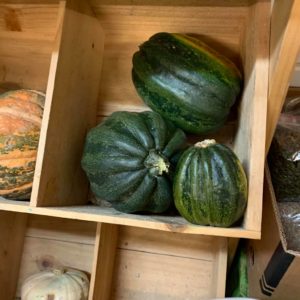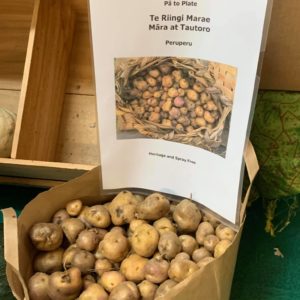How the Pā to Plate Project is Creating Opportunities for Northland Marae Communities
Marae communities from coast to coast in the Bay of Islands through to the Hokianga are transforming their lands into market gardens, some for the first time in decades
Marae communities from coast to coast in the Bay of Islands through to the Hokianga are transforming their lands into market gardens, some for the first time in decades, due to their involvement in the Pā to Plate project, funded by Our Land and Water.
For example, Te Riingi Marae became a member of the Pā to Plate grower collective in 2019. In the marae’s first growing season (2019–20) growers applied customary management practices in their māra kai (garden) and were able to sell peruperu (Māori potato) and kamokamo (Māori squash) in a local store, Putiputi Rā Organics in Whangarei.
The Pā to Plate research team supported Te Riingi Marae to work with all players in the kai (food) system to identify and form a relationship with this local health food store, whose consumers are willing to pay a premium for fresh, local hua (produce). Opportunities were created to generate income and employment, bring multiple communities together, and increase knowledge about growing and ancestral lands.
Producers in Oromāhoe and Tautoro have also begun providing fruit and vegetables to shops, including Putiputi Rā Organics, in a trial of the readiness of producers to access markets. This is building grower capacity through learning about the role of quality and kōrero (stories) when marketing hua.
Seven communities are involved in the Pā to Plate project: Waitangi, Oromāhoe, Tautoro, Whirinaki, North Hokianga, Kaikohe and Karetu. Pā to Plate researchers, led by Merata Kawharu of Otago University and Nukuroa Consulting, have observed that involvement in the project is reinvigorating these local marae communities – and descendants who live further away.
Many Māori from the Bay of Islands and Hokianga now live in cities to the south and are no longer strongly connected to their ancestral lands. Northland faces significant economic, cultural, health, justice and environmental problems that are complex and cross-generational.
Pā to Plate is a community-led initiative that provides research-backed support to help reverse these negative trends in Northland, through nurturing and growing skills, enhancing lands and waterways, providing employment, growing and supplying healthy foods and other resources. By reconnecting descendants to kai grown in their ancestral landscapes, the project aims to give urban Māori a sense of belonging, security and identity as tangata whenua.
Pā to Plate was initiated by the Mauri Whenua Ora programme (2016–19) as a collaborative kaupapa Māori research project. It found that people wanted better employment opportunities in Northland, access to healthy kai and resources from home, and stronger connections to their ancestral homes. To meet these needs, Pā to Plate continues to be developed by the New Models for Collective Responsibility programme (2019–23).
Seven communities are involved in the Pā to Plate project: Waitangi, Oromāhoe, Tautoro, Whirinaki, North Hokianga, Kaikohe and Karetu
What's next for Pā to Plate?
At its heart, Pā to Plate is harnessing and developing connections between non-local descendants and marae kāinga. A ‘proof of value' website (www.pa2plate.com) is in development. An online ordering system will be added to this to enable people to order foods from their ancestral marae, following testing for feasibility, opportunities and constraints.
The website will also enable grower communities to share their experiences and challenges. Growers have already begun supporting others locally to return marae land to the thriving gardens that were there historically, sharing kōrero and mātauranga (knowledge of lands and growing) to build capacity.
Additional funding from Ministry for Social Development and Foundation North is beginning to seed business development. Chapman Tripp is establishing a legal entity (E Mara E Ltd) that will oversee Pā to Plate and provide mechanisms to alleviate the poverty that is prevalent in marae communities of Northland.
Pā to Plate’s focus is on foods that are not detrimental to land, water or climate, and improve human health while unlocking the economic potential of whenua (land) to support tangata whenua. In time, Pā to Plate growers will develop value-added products from special recipes from the marae and will develop land opportunities such as indigenous saplings, Māori medicinal plants and berries found in indigenous forests. Once waterways are restored to good health, traditional foods from waters like koura and tuna will become part of the Pā to Plate value chain.
___
More information:
Author
 View Our Strategy Document 2019 – 2024
View Our Strategy Document 2019 – 2024







Leave a Reply